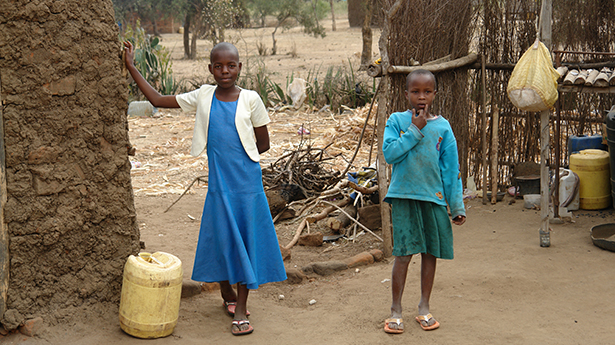Interview by Ali Shlom
How do villagers protect their livelihoods and communities when the land they have relied on for decades gets stripped away? That’s exactly what Justine Reed, Global Greengrants’ Vice President and Executive Director of Global Greengrants Fund / UK & Europe, went to Kenya to understand.
What major issues are grantees in East Africa addressing?
The loss of traditional lands, which were not owned but were available to support traditional grazing practices. These lands are disappearing in the name of “preservation,”—they’re being designated as parks and wildlife refuges—and due to development as urban centers like Nairobi grow. The need for materials and the impact of all that building, even on remote rural communities, can be intense.
The pressures of privatization and development are compounded by climate change. Pastoral communities have a smaller and smaller footprint on which to live their traditional lifestyles.
Describe a project you visited.
One organization I visited, Kisaulu 3 Corners Self Help Group, was struggling with the impacts of sand harvesting. Multiple times a day for over 10 years, large trucks have rolled into Kisaulu village to harvest sand from river beds. It is trucked to nearby cities to be used in construction projects. But taking sand has become a huge problem for the community, which is largely dependent on rain-fed subsistence farming.
Sand in the riverbed helps slow the flow and force of water, allowing the water to spread and seep into the ground over a large area. Harvesting the sand creates gigantic chutes that water washes through during rains, eroding the stream bed. This lowers the water table over time.
The community now has to dig twice as deep to reach their drinking and irrigation water. Rapid population growth, widespread unemployment, scarce water, and falling food production are also making the drought-prone area around Kisaulu highly vulnerable to the effects of climate change. The community is largely dependent on rain-fed subsistence farming. Water intensive agricultural practices coupled with drought and the lowering water table is leaving this community in crisis. And extreme El Niño rains, purported to be the worst in up to 60 years, were on their way.
Justine and Global Greengrants’ Grant Advisor in Kenya, Violet Matiru, view severe erosion in a riverbed–the cumulative result of intensive sand harvesting in Kisaulu village.
These are survival issues. And they are causing deep conflict in the community between people who want to stop the sand harvesting and those who rely on the few pennies a day they receive in exchange for the sand.
How did the group use the Greengrant?
The Kisaulu 3 Corners Self Help Group asked for a Greengrant to help combat this environmental degradation by putting gabions in the river. Gabions are wire and stone structures placed in the eroded riverbed to help slow the flow of water and capture the sand and sediment being washed down stream.
A gabion in a streambed near Kisaulu.
The group needed resources to purchase materials to build these dams and rehabilitate the areas where sand had been extracted. In addition, the community leaders wanted to educate farmers on new irrigation methods, and help heal the community by providing opportunities for farmers to sustainably manage their land, showing that they could all thrive without sand harvesting.
We were able to get the grant to Kisaulu 3 Corners Self Help Group very quickly so that it could prepare for the El Niño rains.
How do relatively small amounts of money create change?
Violet, Justine, William Kipetu, and George Musa admire a spring restored with a Greengrant.
As in the case of the Kisaulu 3 Corners Self Help Group, we are often a group’s first source of funding. Greengrants often help local leaders by providing the funding they need to organize and bring an idea into action. Some of the grantees I met had started with smaller projects and, with momentum and confidence they had gained from small success, had moved on to tackle much larger—or even multiple—projects. Some are even mentoring other communities.
It strengthened my belief in the importance and impact of leadership, self-confidence, and self-empowerment of community groups. They have good ideas, and through their successes their communities become more engaged. With every success, they draw in new people, and new opportunities and ideas emerge. It’s inspiring to see how people are adapting and facing the challenges to their lifestyle and livelihoods in their own way, that is staying true to their culture and beliefs.
Photo by Anthony Mwangi

